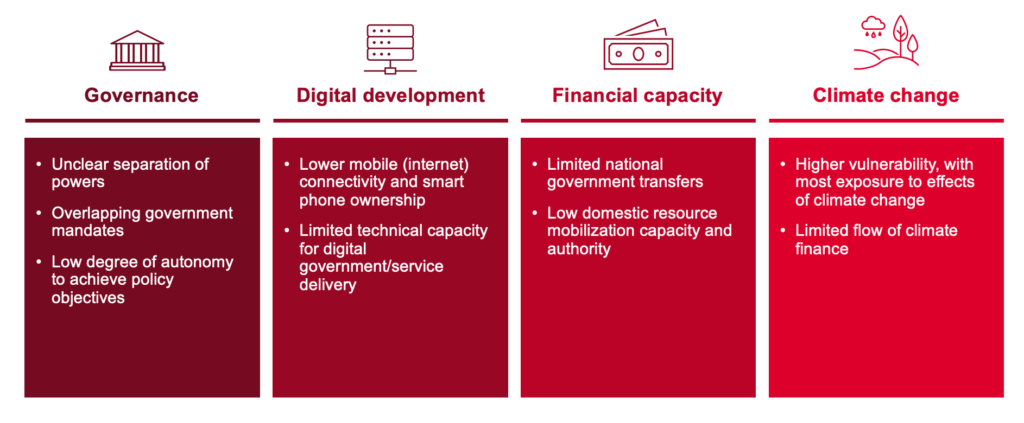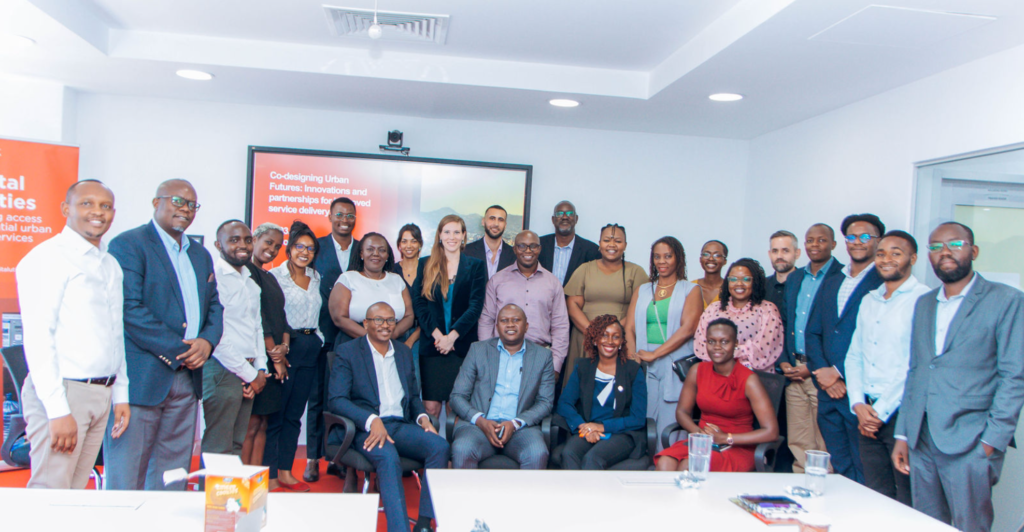On Thursday, 14 March 2024, Connected Places Catapult, UN-Habitat, and the GSMA Digital Utilities programme launched a new report ‘Codesigning Urban Futures: Innovation and partnerships for improved serviced delivery in intermediary cities’, which outlines the case for and the key objectives of the Co-Designing Urban Futures initiative.
The launch event, held online and in-person at the GSMA Nairobi Office, provided an overview of the Codesigning Urban Futures initiative, shared findings from the report, and included a roundtable discussion on the state of digital adoption in cities across East Africa. It was attended by a range of key stakeholders and partners from government (both national and municipal government representatives from across the region), the private sector (corporates and innovative service providers from the start-up ecosystem), enabling organisations, and development agencies. This blog highlights the key report summary and takeaways from the workshop and explores what is next for the initiative.
The context to the Codesigning Urban Futures initiative
Intermediary cities – in this case defined as cities with less than one million inhabitants – account for the majority (58%) of the urban population in LMICs. In Asia, 54% of the urban population live in such cities, while only 16% of the urban population are in megacities. Meanwhile in Africa, up to 210 million people live in an estimated 1,400 intermediary cities. Cities with a population between 100,000 and 300,000 are also among the fastest growing with an average annual growth rate of 4.5 per cent according to Africapolis. Despite their prevalence and importance, national governments and donor initiatives tend to prioritise larger cities such as capital cities (e.g. Nairobi or Kigali) and economic hubs (e.g. Lagos and Douala); with the development of intermediary cities often being overlooked or deprioritised. This is also highlighted when it comes to innovation and start-up activity, which tend to be concentrated in large cities.
This results in uneven development, unrealised potential, and unplanned trajectories of urbanisation. According to the OECD, cities between 50,000 and 1,000,000 residents have lower electricity grid connections, piped water access, and mobile phone ownership than their larger counterparts with a population above a million. For instance in Madagascar, fewer than 20% of people living in small and medium cities have access to drinking water, and in the past decade poverty in secondary cities throughout the country increased from 46% to 61%.
While larger and intermediary cities face some similar challenges, there are unique challenges when it comes to the development of intermediary cities (see our report for further details).
The unique challenges of intermediary cities

Despite these challenges, intermediary cities hold immense potential to shift national pathways of urbanisation, alleviate pressures on larger cities, and create avenues for more resilience, sustainability, and productivity. It is therefore critical to work with intermediary city governments and their partners to scale innovative service delivery models that are tailored to the unique contexts of intermediary cities. This ensures that these cities become engines of social mobility and national development. The Co-Designing Urban Futures initiative aims to do so through a 3-phased approach that goes from challenge identification (phase 1) to innovation acceleration (phase 2), to investment ecosystem building (phase 3) (more details in the report).
The three phases of the Co-designing Urban Futures initiative

Our roundtable discussion aimed to identify the main challenges and opportunities associated with this approach and reflected on lessons from other initiatives aiming to scale innovative approaches in urban settings. Some of the main takeaways include:
- The opportunity to implement innovative solutions in intermediary cities is significant. Given the presence of an available market, start-ups may find it easier to deploy their solutions in smaller cities with less competition. In intermediary cities, they may also enjoy closer proximity to both their customers as well as to city officials, who influence key decisions. Scaling in intermediary cities might also require new product and business model innovations that could also prove beneficial for a start-up’s wider operations. However, start-ups need to recognise the challenges of venturing into such cities as there will be a smaller market size and founders might be required to allocate their limited resources to build relationships with key stakeholders.
- For city initiatives, working with cities from the very beginning is critical. Framing challenges and crafting appropriate solutions with partner cities is key to ensure that the solutions are reach relevant groups of residents but also to secure buy in from relevant city officials. Our initiative aims to work with cities to identify their priority challenges and collaborate to design and offer solutions that address these issues. Local leaders must balance different priorities with the limited time and resources and working within their priorities increases the chances of success. In our toolkit that offers tips on how to forge successful partnerships with the public sector, mutual discussions for alignment are considered best practices.
- As country governance frameworks become more decentralised, there are more opportunities for intermediary cities. Despite the challenges associated with transferring of political, fiscal, and administrative authorities to local governments such as overlapping mandates and intra-governmental transfers, decentralisation is bound to change how intermediary cities develop. Subnational authorities will also be able to more efficiently mobilise and allocate resources for essential services and infrastructure, support their own growth, and contract relevant private sector partners.
- While digital solutions play a role in service provision, there is the need to improve the broader digital ecosystem. To ensure that city residents are adopting digital solutions, improving digital access and literacy is essential. This expands the market served while maximising the benefits from digital technologies. The GSMA is committed to closing the digital divide by addressing barriers such as affordability and skills so that no one is left unconnected. Additionally, adequate technical capacity in local governments is required for successful projects, and capacity building programmes can support city officials to deliver more effectively.

Conclusion
We are looking forward to kicking off phase 1 of the initiative in our initial priority geographies (Kenya, Rwanda, Tunisia) with the aim of securing government buy-in from selected cities. This will be followed by an innovation capacity assessment consisting of a survey and key informant interviews, validations workshops, peer learning session, and preparation and capacity building for phases 2 and 3.
We welcome partners to reach out to us if you’d like to support the initiative, or if your work has strong synergies with its objectives. In particular, we are looking for:
- Connections to private sector innovators providing innovative solutions in intermediary cities
- Other programmes and initiatives that have strong synergies with our objectives
- Relationships with local government stakeholders that have an interest to co-create
- Funding opportunities to scale the initiative to more markets
Please get in touch with us at [email protected] to find out more about the initiative and explore potential areas of collaboration.
The Digital Utilities programme is funded by the UK Foreign, Commonwealth & Development Office (FCDO), and supported by the GSMA and its members.





